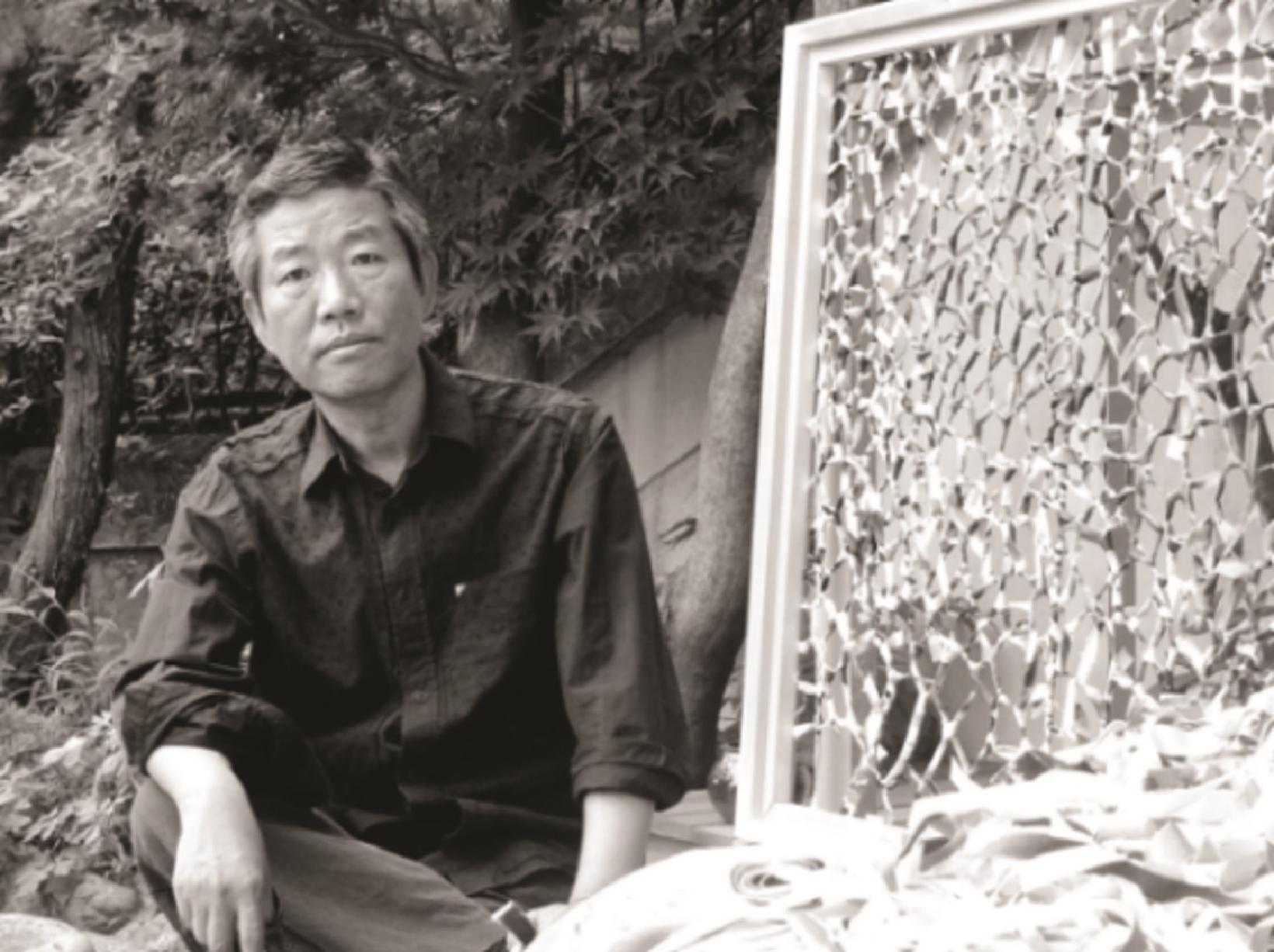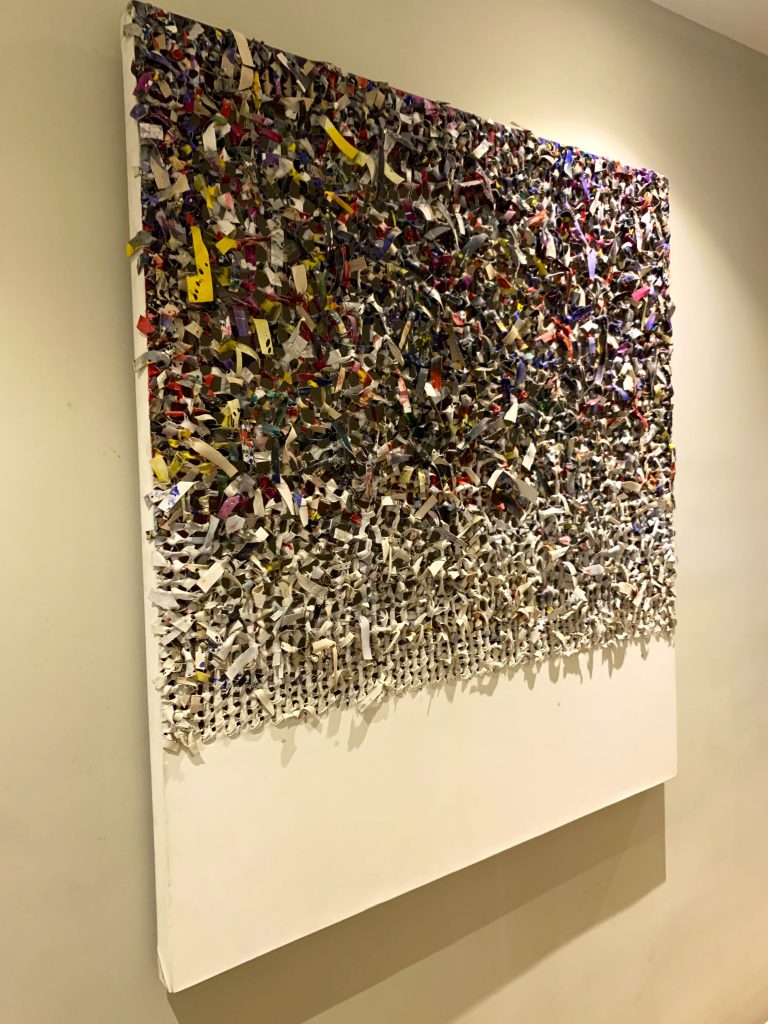Contact us for more information
Sung-Hy Shin was born in 1948 in Ansan, Korea. He studied painting at Hongik University before moving to France in 1980. His work is a constant quest to transcend the fundamental principles of painting. A variety of artistic pursuits are reflected in his body of work. He has tackled issues such as the flatness of the canvas, the materiality of pigments and the limits of the canvas frame, culminating in the invention of his knotting method of weaving and tying painted canvas strips.
When Sung-Hy Shin began his work from the mid-1970s and early 1980s was essentially oil paintings on burlap. In them, he hyper-realistically depicts the texture of the canvas, jute or a hemp-like material, as a trompe l’oeil. These representations of burlap amplify the viewer’s perception of the actual fabric of the canvas. They also show the artist’s unique interpretation of the medium of painting.
A technique that goes beyond the traditional limits of painting
In the 1980s, Sung-Hy Shin presented collages composed of small pieces of cardboard painted and glued on a Plexiglas plate set in a wooden frame. When the work is hung on the wall, the projected shadow allows for a doubling. As a result we observe a transformation of the surface into volume. Shin’s painting seems to preserve an ambiguity between plane and volume.
In the 1990s, he began his “Continuity Solution” series in which he cut colored canvases into strips. Then he reassembled them and sewed them back together. The seams are exposed and the margins are roughly cut out so that the effects of light and shadow play on them in works that also achieve relief and become three-dimensional.
The artist has strived all his life to remain a painter, while refusing to stay within the traditional limits of painting. In all his works, he has never stopped deconstructing and reconstructing. His works are in international institutions such as the National Museum of Modern and Contemporary Art of Korea, Seoul Museum of Art, Busan Museum of Art, Daegu Museum of Art, National Fund of Contemporary Art, UNESCO and many others.





